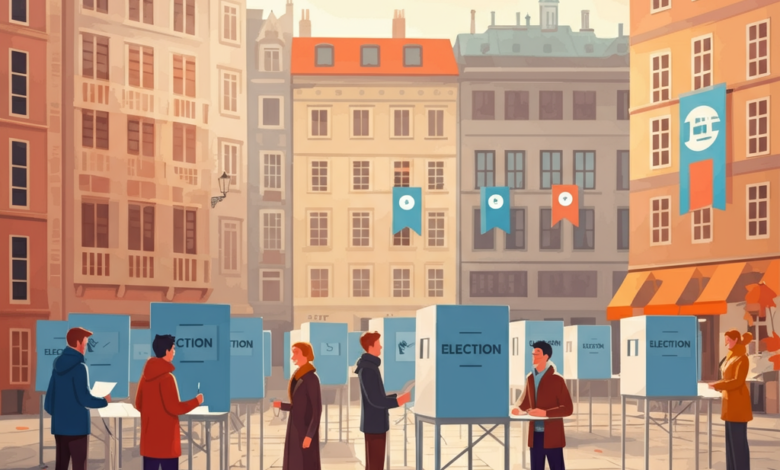The Power of Your Vote: An Essay on General Election

General elections are the lifeline of democratic societies, representing the power and responsibility of the people to shape their government’s future. They are not merely administrative events; they are milestones of public participation, where citizens express their collective voice by selecting leaders and setting the course for national policies. Through this essay on general election, we will explore its historical evolution, the electoral process, and its profound influence on governance and daily life.
A Historical Perspective on General Elections
General elections have come a long way since their inception. The roots of electoral systems can be traced back to ancient Greece, where the concept of democracy was born. While not perfect—limited to only free male citizens—it was one of the earliest attempts at giving citizens a say in shaping their government.
Fast forward to the modern era, the transition from monarchies to republics and constitutional democracies brought significant changes. For instance, the United States held its first general election in 1789, where George Washington was unanimously elected as the first president. Similarly, the UK shifted significantly in 1832 with its Reform Act, which expanded voting rights to more citizens, though women and working-class individuals had to wait much longer to gain suffrage.
Today, general elections in democratic nations are typically underpinned by constitutional laws. Universal suffrage—the right of almost all adults to vote—is now a defining feature of these elections. Modern electoral systems have embraced principles of fairness and inclusivity, though they continue to evolve.
Understanding the Electoral Process
The electoral process is both intricate and fascinating, involving multiple stages that ensure fair and transparent elections. Here’s a step-by-step guide to how it unfolds:
1. Candidate Nominations
Elections begin with political parties and independent representatives nominating candidates for office. Candidates typically align themselves with party ideologies and key issues that resonate with voters.
2. Campaigning
Leading up to election day, candidates and political parties undertakes campaigns to connect with the electorate. Through speeches, advertisements, debates, and rallies, candidates present their vision and policies to sway voters in their favor.
3. Voter Registration
To cast their vote, citizens must first register as voters. Electoral bodies often organize voter registration drives to ensure eligible voters are accounted for.
4. Polling Day
Polling day is the culmination of months of preparations. Voters visit polling stations to cast their ballots, a moment that encapsulates the essence of democracy.
5. Counting Votes and Declaring Results
After polling concludes, votes are meticulously counted, and winners are declared by election commissions. This marks the completion of the process and the start of a new political chapter.
Why Voter Participation Matters
Voter turnout is a critical metric of any election’s success. High participation rates ensure that the government reflects the will of the majority, making elected leaders more accountable to their constituents. But why do general elections often see varying voter turnout?
The Consequences of Low Voter Turnout
When voter turnout is low, elections are decided by a smaller subset of the population, often leading to policies that may not represent the entire country’s interests. This can create disenfranchisement and fuel a disconnect between citizens and their government.
The Impact of Voting on Government Policies
Voting is not just about selecting leaders; it’s about influencing policies. Every vote contributes to defining priorities in critical areas such as healthcare, education, climate change, and public safety. A citizen who refrains from voting cedes their opportunity to impact these critical discussions.
Key Issues in the Upcoming General Election
With every general election comes a unique set of challenges and priorities that dominate political discourse. For the upcoming election, several central issues are likely to shape voter perceptions:
- Economic Policies: Rising inflation and unemployment are key concerns for many voters. Candidates are expected to present actionable plans to address these challenges.
- Healthcare Reforms: The accessibility and affordability of healthcare continue to be a pressing issue, particularly in the wake of global health crises.
- Climate Change Commitments: With growing awareness about environmental sustainability, voters are keen to hear realistic plans for combating climate change.
- Social Justice and Equality: Issues around racial and gender equality, along with LGBTQ+ rights, will likely influence voting patterns.
By examining the platforms of major parties, voters gain an understanding of which candidates align with their personal and societal priorities.
Analyzing Political Parties and Their Platforms
The upcoming general election is expected to feature fierce competition among dominant political parties. Each party presents a unique narrative and set of promises aimed at appealing to the electorate.
Party 1: The Progressive Visionaries
This party prioritizes climate action, social welfare programs, and universal healthcare. Their platform resonates with younger voters and those advocating for robust government intervention.
Party 2: The Economic Reformers
Focused on cutting taxes, reducing government spending, and boosting private sector growth, they appeal to fiscally conservative voters and businesses.
Party 3: The Traditional Centrists
The centrists aim to appeal to a broad base, emphasizing bipartisan solutions and incremental reforms across critical sectors, from education to healthcare.
By analyzing campaign promises critically, voters can separate rhetoric from actionable plans.
Electoral Reforms and Their Future Impact
Democracy thrives on fairness and transparency, but modern elections face challenges that call for reform. Consider these critical areas:
- Electronic Voting Systems: Although efficient, e-voting has faced scrutiny regarding cybersecurity and transparency. Upgrading technical safeguards can restore trust.
- Campaign Finance Transparency: Reforms introducing stricter measures on campaign funding can curb undue influence by powerful entities.
- Voter Education Programs: Improving voter awareness about candidates, policies, and the voting process can empower citizens to make informed decisions.
By addressing these challenges, democracies can elevate electoral integrity and public trust in the system.
Shaping the Future Through Your Vote
General elections are more than a democratic right; they are the foundation of collective decision-making and societal progress. Your vote holds the power to shape policies, elect ethical leaders, and drive meaningful reforms. Think of it as a vital investment in your country’s future.
As political enthusiasts and citizens, staying informed is crucial. Research party platforms, follow debates, and take time to understand the pressing issues. Knowledgeable voters contribute to the development of a participatory democracy, ensuring the voice of every citizen counts.



